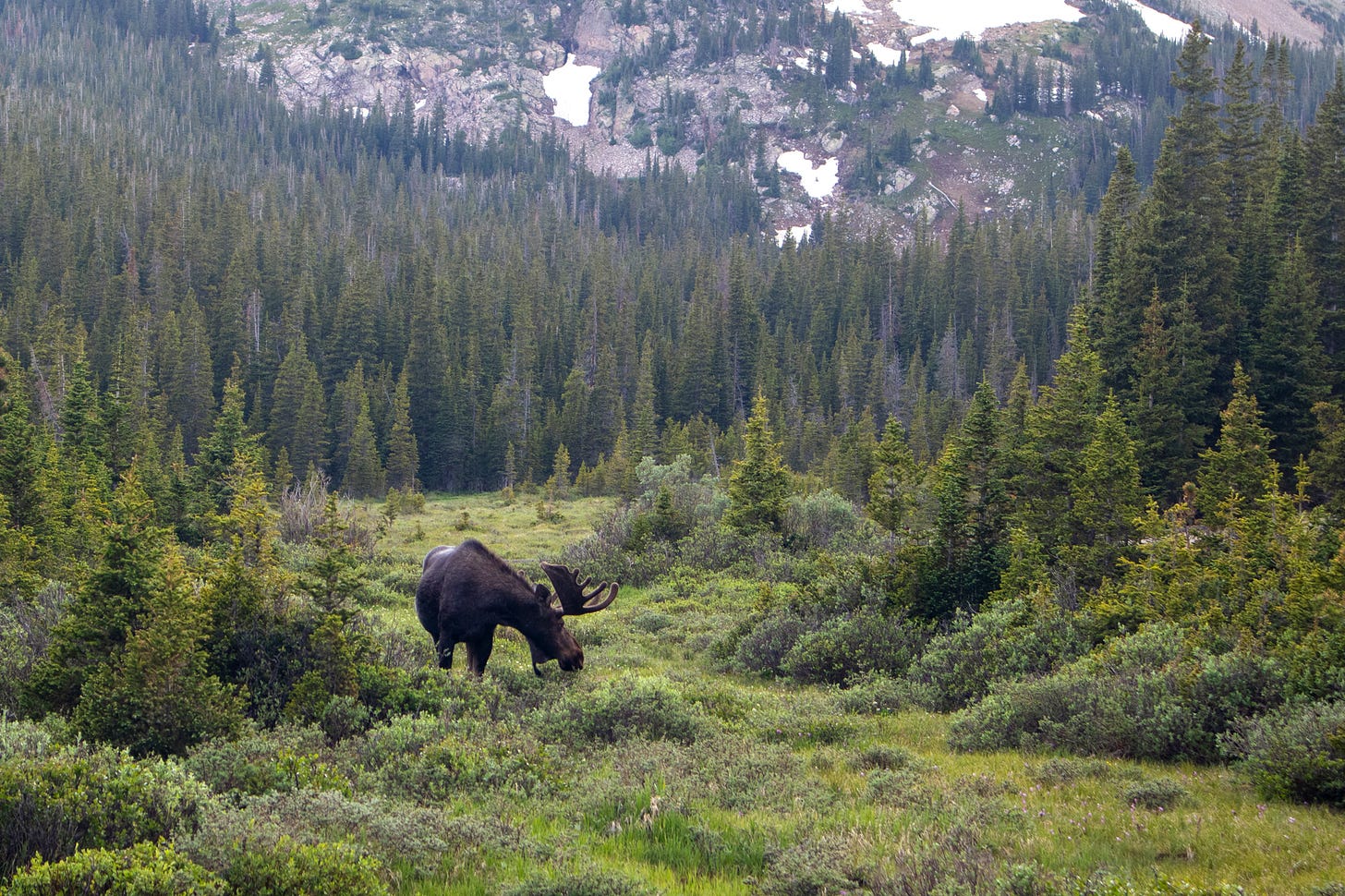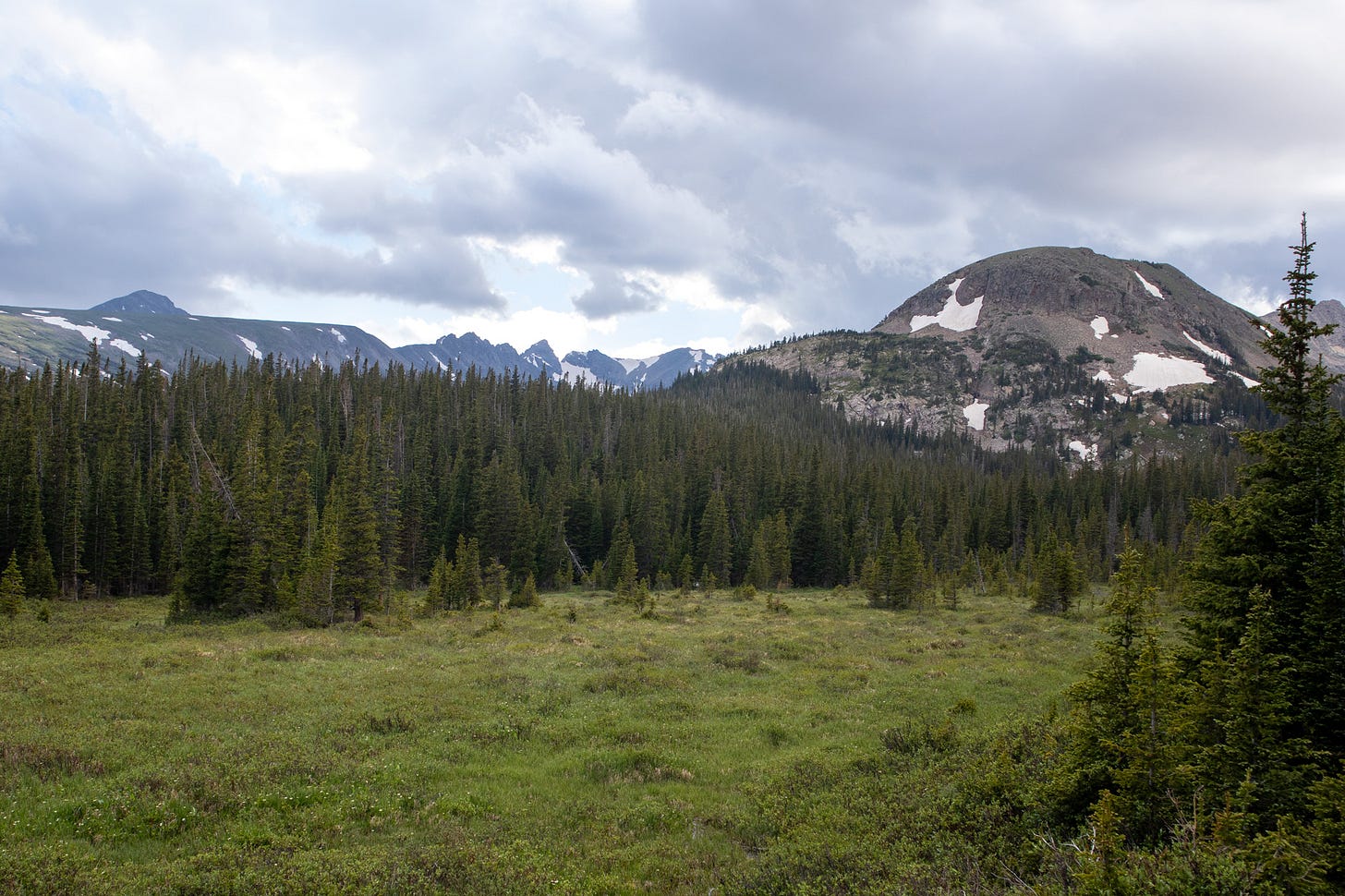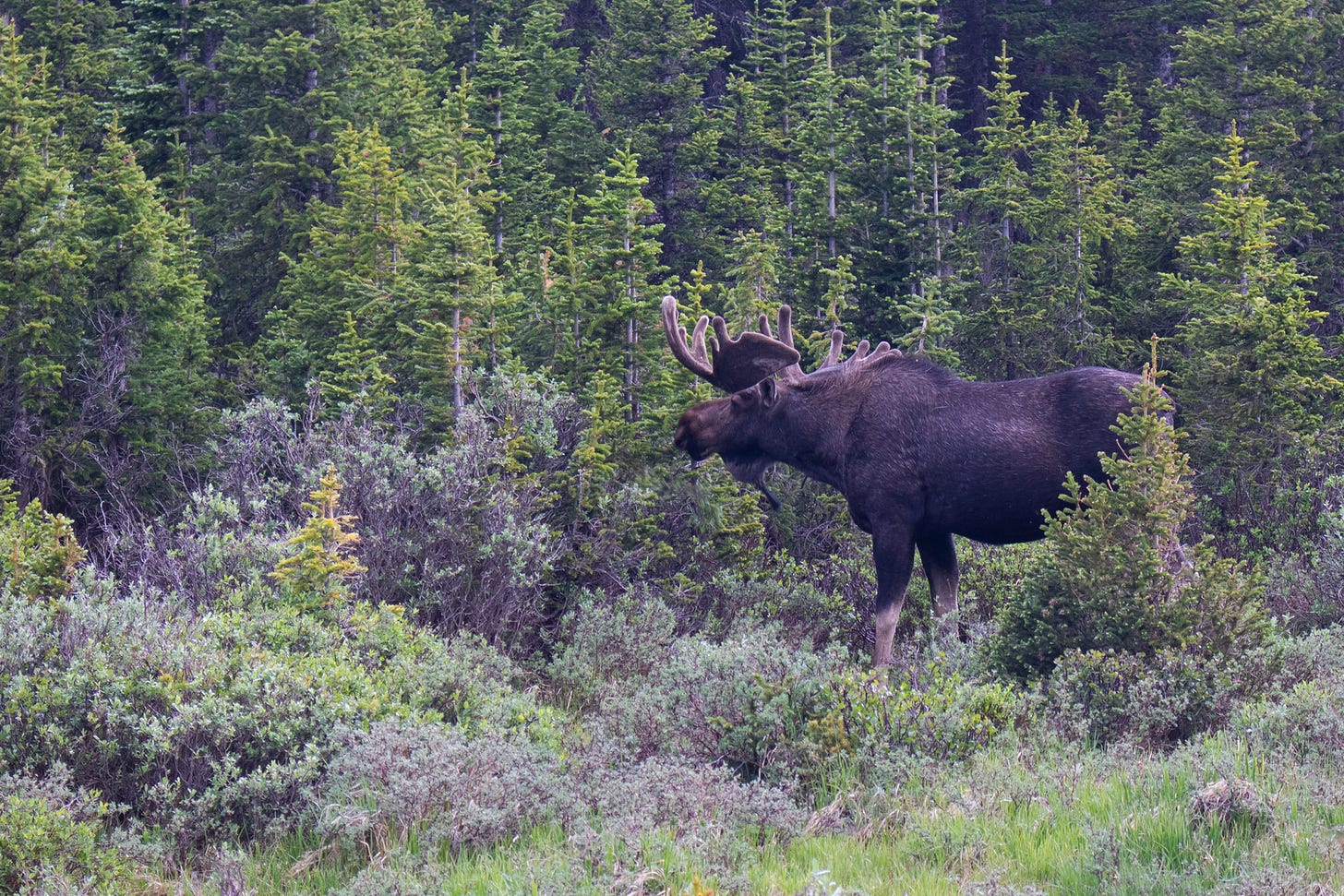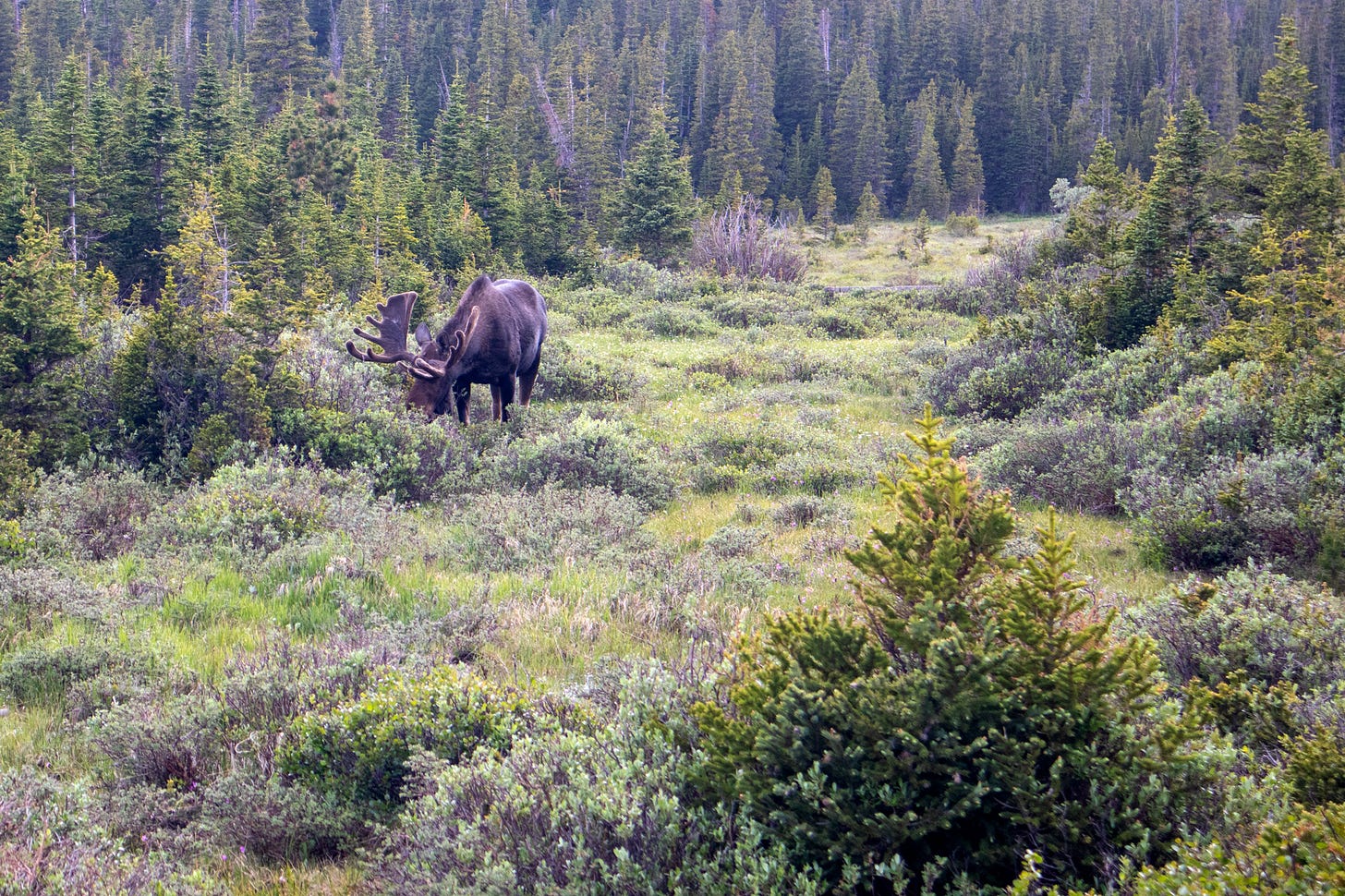
INDIAN PEAKS WILDERNESS, COLORADO — The hiking season is in full swing, and trailheads throughout the Front Range are teaming with summertime holiday-makers. To avoid the crush, I schedule my hikes at odd hours and seek out less-congested areas. This evening, I am in the mountains above Ward, Colorado, for the first hike I’ve taken since March.
It’s a light hike—I have no intention of trekking the steep miles up to the alpine lakes dotted above. Instead, I wander a network of paths linking the parking lots, campsites, and trailheads scattered throughout the area. There are spectacular views along the route. I pause to take a few photographs and to record the evening chorus of birds that echos down the long glacial valley.

At one point, I come to a clearing where a boardwalk crosses a long, boggy meadow. I’m halfway across the boardwalk when I hear something to my left. A gruff baritone grunt, the rustling of shrubbery, crunching, chewing. I freeze. Take a deep breath.
Slowly, cautiously, I turn my head to find a bull moose less than fifty feet from me. He’s not as close as I feared, but he’s still too close for comfort. I’m exposed and don’t know whether to go forward or back. It doesn’t matter; it’s the same distance to reach cover in either direction.

I try to calm myself. The moose appears to have no interest in me. And I’m quite sure he heard me stomping along the boardwalk, so I’ve not surprised him. That’s good. I mull over my options. The boardwalk stands on modest stilts above a dense mat of aquatic vegetation. I can’t step down off either side—too high and too boggy. I can only go forward or back. What to do?
While I ponder my options, I watch the moose. His calmness is catching. He’s a magnificent animal—massive, muscular, regal, aloof. Not at all the dull-witted hulk that moose are so often made out to be. He tugs clumps of greenery from the bushes and trees in front of him, shaking evergreens ten feet tall like spindly saplings.
It’s summer now, so the moose’s diet is a generous buffet of leaves and shoots from evergreens, aspen, and willow. Aquatic plants like horsetail, water lilies, and pondweed are also on the menu. During colder months, his diet becomes meager—mostly bark, roots, and twigs.

I would never intentionally approach a moose this closely for any reason, but chance has placed me in this spot, camera in hand. What the heck? I raise the camera, adjust the frame, and press the shutter release.
After a few minutes, the moose begins to retreat down the valley, farther from the boardwalk. I step softly forward, moving slowly and watching the moose for any signs of irritation or aggression. There are none. I continue my cautious steps until I’m at a safe distance. I turn around for one last look and to capture a few more photographs of this majestic creature.

References
Bartalucci, A. and B. Weinstein. Alces americanus (Moose). Animal Diversity Web. Accessed Jul 9, 2022.
Rocky Mountain Mammals by David M. Amstrong. University Press of Colorado. 2008.
Geist, Valerius. Moose. Encyclopedia Britannica, 26 Feb. 2021. Accessed 9 July 2022.

What an encounter! Beautifully captured in words and pictures 😊